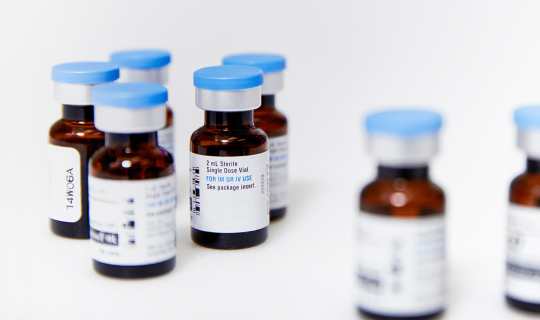Why biopharma companies must understand barriers to biosimilar adoption
By AmerisourceBergen
The biosimilar market has grown exponentially in recent years. As of February 2022, 21 biosimilars have launched in the U.S.1
Growing use of biosimilars allows more patients to gain access to expensive, yet effective biologic therapies, especially in the specialty therapeutics space. In fact, Rand Health Quarterly predicted the uptake in biosimilars will reduce direct spending on biologics by $54 billion between 2017 and 2026.2 Biosimilars are predicted to lower costs across the health care continuum, for patients, plan sponsors and players.
Each announcement of a new biosimilar product prompts competition in the marketplace, further driving down costs. On average, new biosimilars come to market with 30 percent lower launch prices than their orginators.3
Despite the promise, there are still barriers to biosimilar adoption among providers and payers. Biopharma companies must understand these hesitations, as they impact the wider acceptance of the products they are bringing to market.
Four common hesitations
1. Provider awareness and acceptance
Significant resources are needed to educate health care providers, especially in specialties where biosimilars are newer. The coming LUCENTIS® biosimilars in the ophthalmology/retina market present one acceptance challenge that biopharma companies can get in front of via educational campaigns. Providers must embrace biosimilars before they can feel comfortable recommending to patients as a preferred course of treatment.
2. Patient awareness and acceptance
Patients need education regarding these newly available therapies. They should understand they can expect the same health outcomes if their provider prescribes or recommend a biosimilar instead of its reference product. Patients should also be made aware that cost savings from biosimilars could be passed down to them in the form of lower copays.3. Treatment selection
From a treatment perspective, providers must understand that some biosimilars are not approved for all indications of the innovator. Challenges with interchangeability also arise. Although there has been much fanfare over the approval of interchangeable biosimilar SEMGLEE® in the insulin drug class, it’s important to remember not all biosimilars are interchangeable.From the payer’s perspective, each biosimilar is considered a unique drug and their use will require modifying disease and treatment regimens within EHRs and hospital billing systems. Launched biosimilars will need to be evaluated before inclusion on health system formularies, lending another step to the process.
4. Policy variation and authorization struggles
Approved use of biosimilars can vary widely between commercial payers and plans. A typical community specialty practice may be dealing with 15 to 75 different payer configurations—which means added work for administrators trying to untangle which plan approves which product. Specifically in the community oncology space, 37 percent of practices reported payers required step therapy before the practice could prescribe a biosimilar.
Payers require the same level of prior authorization for the biosimilar and the innovator. Biosimilar use could conflict with established value-based contracts. If a switch from an originator to a biosimilar happens during an approved treatment plan, then re-approval and patient education are required.
What does this mean for biopharma companies?
Biosimilars make sense across the healthcare spectrum. For patients, their use has added 10 million additional days of therapy.3 As the promise of biosimilars grows more fully realized, biopharma companies must ask themselves:- How do we ensure greater access?
- What should happen to lower out of pocket costs?
- What steps should we take to improve overall value?
Addressing these—and other— barriers will bring value to patients, providers, and payers. The progress so far has relied on key stakeholders playing important roles. Biopharma companies work remedying these hesitations will help drive more uptake of these life-altering therapies.
References
1 Biosimilar pipeline report: A guide for understanding the growing market. AmerisourceBergen. 25 February 2022. Accessed 21 April 2022. Available at: https://amerisourcebergen.com/sitecore/content/global-settings/insights/amerisourcebergen/manufacturers/biosimilar-pipeline-report
2 Mulcahy AW, Hlavka JP, and Case SR. Biosimilar Cost Savings in the United States: Initial Experience and Future Potential. Rand Health Q. 2018 Mar; 7(4):3.
3 Biosimilar Medicines Equal More Accessible Care for America’s Patients. Biosimilar Council. June 11, 2021.
4 Hagan,T. COA Reports Improved Access in Oncology. AJMC; November 15, 2021.



